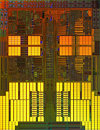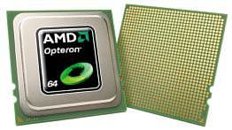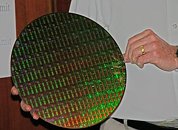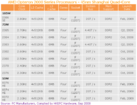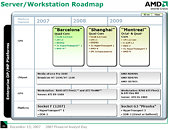
Phenom II X6 Series Details Surface, Slated for May 2010
AMD's upcoming six-core desktop processor, codenamed "Thuban" is on course for a May 2010, suggests a report. The series is likely to receive the brand name Phenom II X6. There are four models planned for release within Q2, 2010. The Thuban core is AMD's desktop implementation of the Istanbul core, in the socket AM3 package, supporting dual-channel DDR3 memory. It is a monolithic multi-core design with six x86-64 cores, each with 128 KB of L1, 512 KB of L2 cache, and a 6 MB L3 cache shared between the six cores. Just as with K10 dual, triple, and quad core processors where AMD used a HyperTransport interface clock speed of 1800 MHz (3600 MT/s), or 2000 MHz (4000 MT/s), the new processor will take advantage of HyperTransport 3.x interface, with a HT speed of 2400 MHz (4800 MT/s). Thuban will be built on GlobalFoundaries' 45 nm node.
The table below lists out details of the four planned models. The model number of the top part isn't known. Most likely it is a Black Edition part, which comes with an unlocked BClk multiplier. It operates at 2.80 GHz, with a TDP of 140W. A step below is the Phenom II X6 1075T, which has an expected TDP of 125W, the 1055T is a notch below, and 1035T being the cheapest part. The exact clock speeds of the latter three models isn't known as yet. A month ahead of releasing these chips, AMD will announce the AMD 8-series chipset platform, led by 890FX (high-end, best for CrossFireX), 890GX (performance integrated graphics with CrossFire support). The AMD SB800 series southbridge chips will feature native support for SATA 6 Gb/s. Its on-die SATA controller gives out six SATA ports complete with RAID support. Some existing AM3 motherboards based on 7-series chipsets may also support Phenom II X6 with a BIOS update.
The table below lists out details of the four planned models. The model number of the top part isn't known. Most likely it is a Black Edition part, which comes with an unlocked BClk multiplier. It operates at 2.80 GHz, with a TDP of 140W. A step below is the Phenom II X6 1075T, which has an expected TDP of 125W, the 1055T is a notch below, and 1035T being the cheapest part. The exact clock speeds of the latter three models isn't known as yet. A month ahead of releasing these chips, AMD will announce the AMD 8-series chipset platform, led by 890FX (high-end, best for CrossFireX), 890GX (performance integrated graphics with CrossFire support). The AMD SB800 series southbridge chips will feature native support for SATA 6 Gb/s. Its on-die SATA controller gives out six SATA ports complete with RAID support. Some existing AM3 motherboards based on 7-series chipsets may also support Phenom II X6 with a BIOS update.

